Bb10.3
The 'leg for swimming' (flipper) at left in Bb10-1 is 377 - 349
(Bb9-23) = 4 weeks after Procyon (α Canis Minoris) at
which place it was depicted as oriented upside down. In the
Egyptian X the line from
Procyon went wintershins down to the Dove of Noah (Columba). The line
from Betelgeuze at the armpit of Orion went in the opposite
direction and down to the star Naos (the Ship) in Argo
Navis.
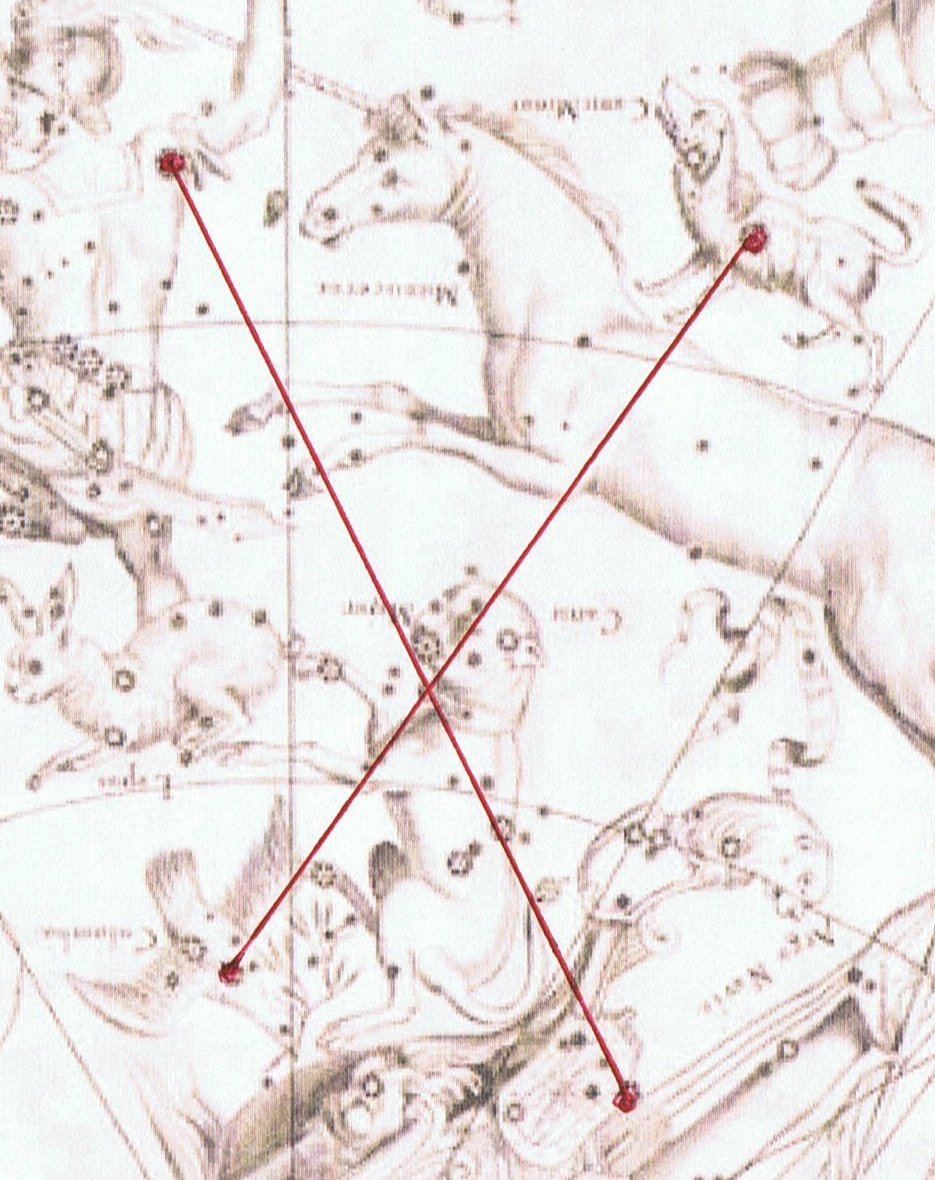
The point where these 2 lines crossed seems to have been intended
to locate Sirius, the Nose of Cyon (Canis Major).

... The old man gave the Raven two small
sticks, like gambling sticks, one black, one multicoloured. He
gave him instructions to bite them apart in a certain way and
told him to spit the pieces at one another on the surface of the
sea. The Raven climbed back up the pole, where he promptly did
things backwards, just to see if something interesting would
occur, and the pieces bounced apart. It may well be some bits
were lost. But when he gathered what he could and tried again -
and this time followed the instructions he had been given - the
pieces stuck and rumpled and grew to become the mainland and
Haida Gwaii ...
 |
 |
 |
 |
 |
 |
 |
|
Bb9-21 |
Bb9-22 (348) |
Bb9-23 |
Bb9-24 |
Bb9-25 |
Bb9-26 (352) |
Bb9-27 |
|
RIGHT ASCENSION
DAYS AT THE FULL MOON: |
|
ρ Gemini
(112.1),
Eskimo
Nebula = NGC2392 Gemini
(112.2)
ANTARES (α Scorpii) |
Al Dhirā'-5 (Forearm)
/
Punarvasu-7 (The Two
Restorers of Goods) /
Mash-mashu-Mahrū-10
(Western One of the Twins)
CASTOR (Beaver) = α Gemini (113.4)
*113.4 = *41.4 + *72.0 |
ANA-TAHUA-VAHINE-O-TOA-TE-MANAVA-7 (Pillar for
Elocution)
υ Gemini (114.0),
MARKAB PUPPIS = κ Puppis
(114.7), ο Gemini (114.8),
PROCYON = α Canis Minoris
(114.9) |
α
Monocerotis (115.4),
σ Gemini (115.7)
*74.0 = *115.4 - *41.4 |
Mash-mashu-arkū-11
(Eastern One of the Twins)
κ Gemini (116.1),
POLLUX = β Gemini
(116.2), π Gemini (116.9) |
AZMIDISKE (Little Shield) =
ξ
Puppis (117.4)
*76.0 = *117.4 - *41.4 |
φ Gemini (118.4)
*77.0 = *118.4 - *41.4 |
 |
|
HELIACAL STARS: |
|
ν
Aquilae (Ant.) (295.0),
ALBIREO - Hen's Beak =
β
Cygni
(295.5) |
ALSAFI (Fire Tripod) =
σ
Draconis
(296.0),
μ
Aquilae (296.3),
ι
Aquilae (Ant.)
(296.8), κ Aquilae (Ant.) (296.9) |
ε Sagittae (297.1),
σ
Aquilae (Ant.) (297.4),
SHAM
(Arrow) = α Sagittae
(297.8)
*256.0
= *297.4 - *41.4 |
β Sagittae (298.0), χ Aquilae (298.3), ψ Aquilae
(298.8) |
υ Aquilae (299.1),
TARAZED
(Star-striking Falcon) = γ Aquilae
(299.3), δ Sagittae (299.6), π Aquilae (299.9) |
Sravana-23 (Ear or Three
Footprints)
TYL =
ε
Draconis
(300.0),
ζ
Sagittae (300.1),
ALTAIR
(Flying Eagle) =
α
Aquilae
(300.3),
ο
Aquilae (300.5),
BEZEK =
η
Aquilae (Ant.)
(300.8) |
ι Sagittarii (301.2),
TEREBELLUM = ω Sagittarii,
ξ Aquilae (301.3),
ALSHAIN (Falcon) = β Aquilae
(301.6), φ Aquilae (301.8) |

... so completely
is Aagjuuk identified with mid-December and
the winter solstice that one Igloolik elder,
invited to point to the constellation in early
November, firmly replied that we would not see it
until around Christmas, and this in spite of the
fact that Altair was at the time in full view to the
southwest ... |
|
10 (314 + 61) |
11 |
12 (*297) |
(378 →
Saturn) |
14 |
15 (*300) |
Jan 16 |
|
NOV 10 (314) |
11 |
12 (*233) |
(378 - 64 → π) |
14 |
15 (*236) |
NOV 16 (320 →
Dramasa) |
|
ko te metimeti - ma to ragi - kua
hua ia i raro |
ma te hokohuki - ki te henua |
kua haati ia e kava |
kava o te ariki |
e huarae - ma to rima - ki te
ragi |
e rere ia mai - ki to huki |
ko to huki ka to ihe - kua reva
te ika |
|
Kava.
1. Sour; salty: vai kava, saltwater, sea;
te kava o te haíga, acrid underarm smell;
tagata kava - tagata kakara i te kava, man with
smelly armpits. 2. He-kava te haha, to be
thirsty. 3. To turn sour, to become embittered,
bad-tempered, exasperated (used with manava):
tagata manava kava, bad-tempered, angry man.
Vanaga. Bitter, salt; vai kava, brackish
water; hakakava, to embalm; kavakava,
acid, sharp, bitter, salt, spiritous, vinegar,
poisonous, disagreeable; akavakava, to make
sharp; hakakavakava, to make acid. P Pau.:
kava, disagreeable to the taste; kavakava,
acid, sharp. Mgv.: kava, to be bitter, sour,
acid, salt. Mq.: kava, bitter. Ta.: ava,
bitter, acid, salt. Kavahia: 1. Comfort,
comfortable, to feast; hakakavahia, comfort,
comfortable. 2. Repulsive (of food), disgusted;
hakakavahia, repulsion. Kavakava, rib;
moi kavakava, a house god G. P Mgv.: vakavaka,
the breast. Mq.: vakavaka, vaávaá,
rib. Ma.: wakawaka, parallel ridges. We shall
need all the available material in order to
determine the germ sense of this word. Sa.:
va'ava'a, the breast-bone of a bird; fa'ava'a,
the frame as of a slate. To.: vakavaka, the
side. Fu.: vakavaka, the side below the
armpit. Ha.: hoowaa, to make furrows. In all
these we may see the idea of ridge or depression, or
of both, as primal (Rapanui, Samoa, Marquesas,
Maori, Hawaii), and as secondary the part of the
body where such appearances is common (Mangareva,
Tonga, Futuna). Churchill. Mgv.: kava, the
pepper plant and the drink made therefrom. Ta.:
ava, id. Mq.: kava, id. Sa.: 'ava,
id. Ma.: kawa, a pepper. Kavakava, a
fish. Sa.: 'ava'ava, id. Kavapui, a
tree. Ta.: avapuhi, a fragrant plant. Mq.:
kavapui, wild ginger. Sa.: 'avapui, id.
Ha.: awapuhi, id. Churchill. Mq.: ava,
a small fish of sweet water. Sa.. 'ava'ava, a
small fish. Ha.: awa, a fish. Kakava,
burnt. Sa.: 'a'ava, very hot. Churchill.
Reva
To hang down; flag, banner. Revareva,
1. To be hanging vertically; to detach oneself from
the background of the landscape, such a person
standing on top of a hill: ku-revareva-á te
tagata i ruga i te maúga. 2. To cast itself, to
project itself (of shadows); revareva-á te kohu o
te miro i te maeha o te mahina, the shadow of
the tree casts itself in the light of the moon. 3.
Uvula. Vanaga. To hang, to suspend, flag, banner;
hakareva, to hang up; hakarereva, to hang
up, to balance; hakarevareva, to wave. T
Pau.: reva, a flag; fakarevareva, to
hang up, to suspend. Mgv.: reva, a flag, a
signal. Mq.: éva, to hang up, to be
suspended, to wave a signal. Ta.: reva, a
flag, banner; revareva, to wave. The germ
sense is that of being suspended ... any light
object hung up in the island air under the steady
tradewind will flutter; therefore the specification
involved in the wave sense is no more than normal
observation. Churchill. Mgv.: 1. A plant. Ta.:
reva, id. Mq.: eva, id. Sa.: leva,
id. Ma.: rewa-rewa, id. 2. To cross, to pass
across quickly; revaga, departure. Ta.:
reva, to go away, to depart. Ma.: reva,
to get under way. Churchill. Ta.: The firmanent,
atmosphere. Ha.: lewa, the upper regions of
the air, atmosphere, the visible heavens. Churchill.
Ika 1.
Fish. 2. In some cases, animal in general: îka
ariga koreh[v?]a, animal with the face of a
koreva fish (name given to horses when they
arrived on the island, because of the resemblance of
their heads with that of a koreva). 3. Victim
(wounded or killed), enemy who must be killed,
person cursed by a timo and destined to die;
îka reirei, vanquished enemy, who is kicked (rei).
4. Corpse of man fallen in war. Vanaga. 1. Fish,
animal; ika rere, flying fish; ivi ika,
fishbone; mata ika, pearl. P Pau., Mgv., Mq.:
ika, fish. Ta.: ia, id. 2. Prey,
victim, sacrifice; ika ke avai mo, abuse;
hakarere ki te ika, to avenge. T Mgv.:
ikaiara, to quarrel; ikatamamea, to be
angry because another has handled one's property.
Mq.: ika, enemy, what causes horror. Ma.:
ika, the first person killed in a fight.
Mangaia: ika, a victim for sacrifice. 3?
matamata ika, snow. Ikahi, to fish with a
line, to angle. Mq.: ikahi, id. Ikakato,
to go fishing. Ikakohau, to fish with a line,
to angle. Ikapotu, cape, end of a voyage,
destination; ikapotu hakarere, to abut, to
adjoin; topa te ikapotu, id.; tehe oho te
ikapotu, id.; mei nei tehe i oho mai ai inei
te ikapotu, as far as, to. Ikapuhi, to
fish with a torch. Mq.: ikapuhi, id.
Churchill. |
 |
 |
 |
 |
 |
|
Bb9-28 (12 * 29½) |
Bb9-29 (355) |
Bb9-30 |
Bb9-31 |
Bb9-32 |
|
RIGHT ASCENSION
DAYS AT THE FULL MOON: |
|
DRUS (Hard) = χ Carinae
(119.9) |
ω Cancri
(120.2) |
8h (121.7)
χ
Gemini (121.0),
NAOS (Ship) =
ζ
Puppis
(121.3) |
ρ
Puppis (122.0),
HEAP OF FUEL =
μ
Cancri
(122.1),
ζ
Monocerotis (122.3), ψ
Cancri (122.6),
REGOR (Roger backwards) =
γ
Velorum
(122.7) |
TEGMINE (The Cover) =
ζ
Cancri
(123.3) |
.jpg)
... After they
had departed from Pu Pakakina they reached
Vai Marama and met a man. Ira asked, 'How
many are you?'
He answered, 'There are
two of us.' Ira continued asking, 'Where is
he (the other)?' To that he answered, 'The one
died.' Again Ira asked, 'Who has died?' He
replied, 'That was Te Ohiro A Te Runu.'
Ira asked anew, 'And who are your?' He answered,
'Nga Tavake
A Te Rona.' [E:46]
... Nga
Tavake spoke to Te
Ohiro: 'The land is sinking into the sea
and we are lost!' ...

|
|
HELIACAL STARS: |
|
ε Pavonis, θ Sagittarii (302.3), γ Sagittae (302.5),
μ Pavonis (302.7) |
τ Aquilae
(303.8) |
20h
(304.4)
304.4 = 118.4 + 186.0
η Sagittae
(304.2),
δ
Pavonis (304.4)
*263.0 = *77.0 + *186.0 |
SHANG WEI (Higher Guard) =
κ
Cephei
(305.2),
θ
Sagittae (305.4),
TSEEN FOO (Heavenly Raft) =
θ
Aquilae (Ant.)
(305.6), ξ Capricorni (305.8)
*264.0 = *305.4 - *41.4 |
TSO KE (Left Flag) =
ρ
Aquilae
(306.3) |
 |
|
Jan 17 |
18 |
19 (320 + 64) |
20 |
21 (*306) |
|
17 (321) |
Nov 18 |
19 (*240 = 232 -
83) |
20 |
21 (*242 = 325 -
83) |
|
... Ancient references to a south pole are of course
infrequent; Ovid, howevever, makes Phoebus allude to
it in his instructions to Phaëton ... and Pliny
tells us that the Hindus had given it a name,
Dramasa ... |
|
kua hahaú ia koia |
e rere koia |
ki ruga mai kia au |
kua rere mai ki te toga |
eaha te manu rere toki - ki te
henua |
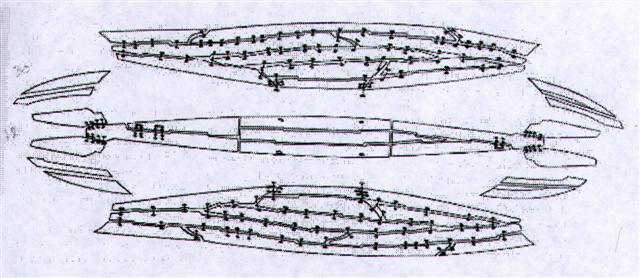 |
 |
 |
 |
 |
 |
 |
 |
|
Ga3-1 (60) |
Ga3-2 |
Ga3-3 |
Ga3-4 |
Ga3-5 |
Ga3-6 |
Ga3-7 (66) |
|
MAY 20 (140) |
21 |
22 |
23 |
24 |
25 (145) |
26 (2 * 73) |
 |
 |
 |
 |
 |
 |
 |
|
Bb9-33 (359) |
Bb9-34 |
Bb9-35 |
Bb9-36 |
Bb9-37 |
Bb9-38 (364) |
Bb9-39 |
|
RIGHT ASCENSION
DAYS AT THE FULL MOON: |
|
AL TARF (The End) =
β
Cancri
(124.3)
RAS ALGETHI (α Herculis) |
χ
Cancri (125.2),
BRIGHT FIRE =
λ
Cancri (125.4)
*84.0 = *125.4 - *41.4 |
AVIOR =
ε
Carinae (126.4),
φ
Cancri (126.8)
*85.0 = *126.4 - *41.4 |
Ο
Ursae Majoris (127.4)
*86.0 = *127.4 - *41.4 |
Pushya-8 (Nourisher)
υ Cancri (128.1), θ
Cancri (128.2) |
Āshleshā-9
(Embrace)
/
Willow-24
(Stag)
π¹ Ursa Majoris,
δ
HYDRAE (129.6),
AL
MINHAR AL SHUJĀ
= σ Hydrae, MUSEIDA = π² Ursae Majoris
(129.9)
RAS ALHAGUE (α Ophiuchi) |
Al Nathrah-6 (Gap)
BEEHIVE (Exhalation of Piled-up Corpses) = ε Cancri,
η Pyxidis (130.4), XESTUS = ο Velorum
(130.5), ζ Pyxidis (130.7),
ASCELLUS BOREALIS = γ Cancri,
β Pyxidis (130.9)
*89.0 = *130.4 - *41.4 |
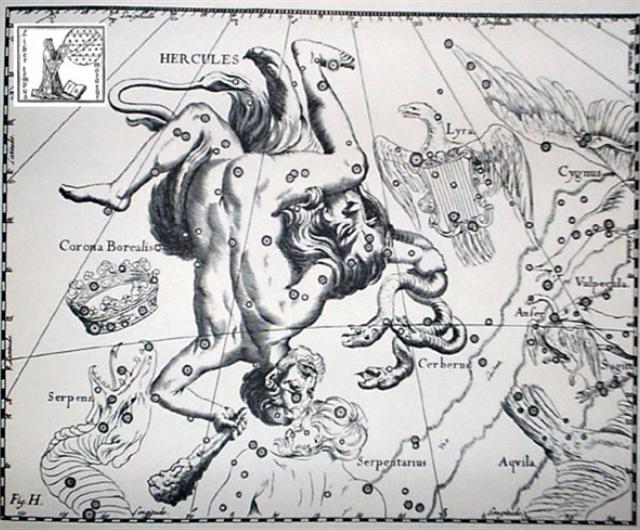 |
|
July 23 (204) |
24 |
25 |
26 |
27 |
28 |
29 (210) |
|
HELIACAL STARS: |
|
GREDI (Goat) =
α
Capricorni
(307.2),
σ
Capricorni (307.5),
ALSHAT (The Sheep) =
ν
Capricorni
(307.9) |
Al Sa’d al Dhabih-20 (Lucky
One of the Slaughterers) /
Ox / Heard Boy (Buffalo)
DABIH =
β
Capricorni
(308.0),
κ
Sagittarii (308.1),
SADIR (Hen's Breast) =
γ
Cygni (308.4),
PEACOCK =
α
Pavonis
(308.7)
*267.0 = *308.4 - *41.4 |
KHUFU
OKUL =
π
Capricorni
(309.6),
BOS =
ρ
Capricorni
(309.9)
ARNEB (α Leporis)
MINTAKA (δ Orionis) |
KHAFRE
ο
Capricorni (310.2),
θ
Cephei (310.5)
HEKA (λ Orionis)
ALNILAM (ε Orionis) |
MENKAURE
ROTTEN MELON =
ε
Delphini,
φ
Pavonis (311.2),
η
Delphini (311.4),
ζ
Delphini,
ρ
Pavonis (311.7)
PHAKT
(α
Columbae)
ALNILAK (ζ Orionis)
*270.0 = *311.4 - *41.4 |
ROTANEV = β Delphini,
ι Delphini (312.3), τ Capricorni (312.6), κ Delphini
(312.7),
SVALOCIN = α Delphini,
υ Capricorni, υ Pavonis (312.8) |
μ²,
μ¹
Oct. (313.2),
DENEB CYGNI (Tail of the Swan) =
α
Cygni
(313.5),
β
Pavonis (313.6),
δ
Delphini (313.8) |
|
Jan 22 |
23 |
24 |
25 |
26 |
27 |
28 (273 + 120) |
|
22 (326 + 61) |
23 |
24 |
25 (390) |
26 |
27 (365 + 27) |
Jan 28 (393) |
|
NOV 22 (326) |
23 |
24 |
25 (390 - 61) |
26 |
27 (*248) |
28 (→ Lono) |
|
The Hawaiians counted 10 days from
November 18 to November 28 in order to find the
beginning of the cycle of Lono. Assuming
glyph number 355 (→
December solstice) on side b of the B text
corresponded to their November 18, we should look at
glyph number 365. |
|
eaha te manu rere |
ki te hokohuki |
kua haga i te mea ke |
ki te tuuga o to toga |
e tagata rere |
mai ki te totoga e |
kua haga ko te mea ke |
 |
 |
 |
|
Bb9-40 (→
365¼) |
Bb9-41 |
Bb9-42 |
|
RIGHT
ASCENSION DAYS AT THE FULL MOON: |
|
Extended Net-26a (Ox)
/
Arkū-sha-nangaru-sha-shūtu-12 (Southeast Star in
the Crab)
η
Hydrae (131.0),
ASCELLUS AUSTRALIS =
δ
Cancri
(131.4),
KOO SHE =
Bow and Arrow =
δ
Velorum
(131.6),
α
Pyxidis (131.8),
ε
Hydrae (131.9)
*90.0 = *131.4 - *41.4 |
ι Cancri (132.0),
ρ
Hydrae (132.4)
*91.0 = *132.4 - *41.4 |
γ Pyxidis (133.6) |
|
July 30 |
31 |
Aug 1 (213) |
|
HELIACAL
STARS: |
|
Al Sa’d al Bula'-21
(Good Fortune of the Swallower) /
Dhanishta-24 (Most
Famous) /
Girl-10 (Bat)
YUE (Battle-Axe) =
ψ
Capricorni
(314.3),
GIENAH CYGNI =
ε
Cygni,
η
Cephei (314.5),
γ
Delphini (314.6),
σ
Pavonis (314.7),
ALBALI =
ε
Aquarii
(314.8)
BETELGEUZE (α Orionis) |
BATEN ALGIEDI (Belly of the Goat) =
ω
Capricorni
(315.8) |
μ Aquarii (316.0) |
|
Jan 29 |
30 |
31 (396) |
|
NOV 29 (*250
= *131 + *183 - *64) |
30 (334) |
DEC 1 (396 -
61) |
|
o tagata itiiti |
kua moe mai kia ia - kua moe
i te ragi |
kua hua ia mai - ki te henua |
|
Iti. Little, small,
medium; iti atu, less; iti no,
small quantity, rare; no iti,
superficial. Itia, shrunken. Itiiti,
scanty, slim; hare itiiti no, cabin;
itiiti noa, mediocre, mediocricity.
Hakaiti, to make small, to lessen, to
weaken, to impoverish, to thin out, to reduced,
to diminish, to retrench, to curtail, to subdue,
to mitigate, to abate. Hakaitiiti, to
squat, to croach. P Mgv.: iti, small.
Mq.: iti, id. Ta.: iti, id.
Churchill.
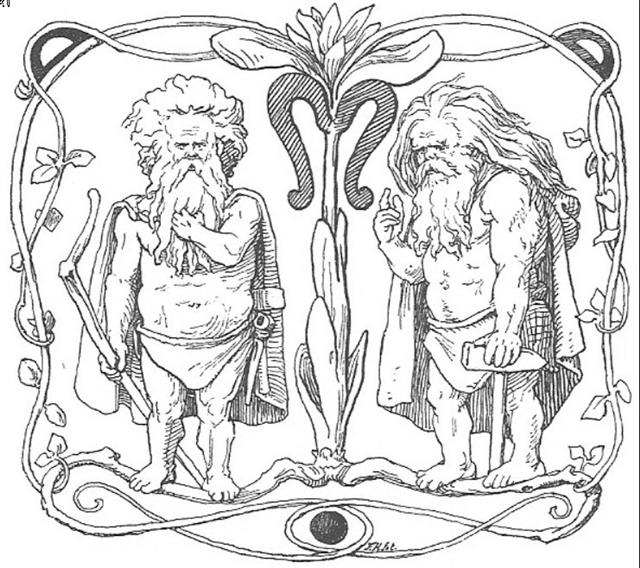
|
Although a very similar glyph (Bb9-45) occurred 6 days
earlier at *136 → Alcyone in
day 136 (May 16), where Metoro told Bishop Jaussen on Tahiti
to count (hia):
 |
 |
 |
 |
 |
 |
|
Bb9-43 |
Bb9-44 |
Bb9-45 |
Bb9-46 |
Bb9-47 |
Bb9-48 |
|
RIGHT ASCENSION
DAYS AT THE FULL MOON: |
|
ζ
Hydrae (134.1),
ρ
Cancri (134.2),
ζ
Oct.
(134.3), ο Cancri (134.6), δ Pyxidis (134.9) |
ACUBENS = α Cancri,
TALITHA BOREALIS = ι Ursae Majoris
(135.0), σ Cancri (135.2), ρ Ursa Majoris (135.6) |
ν Cancri (136.0),
TALITHA AUSTRALIS = κ Ursae Majoris
(136.1), ω Hydrae (136.8) |
9h
(137.0)
σ¹ Ursa Majoris (137.0), κ Cancri (137.3),
τ
Cancri (137.4),
ALSUHAIL (al Wazn, of the Weight) = λ Velorum
(137.5), σ² Ursa Majoris (137.6), τ Ursa Majoris
(137.7), ξ Cancri (137.8)
*96.0 = *137.4 - *41.4 |
κ Pyxidis (138.0), ε Pyxidis (138.5) |
π
Cancri (139.2),
MIAPLACIDUS =
β
Carinae
(139.3),
TUREIS (Little Shield) =
ι
Carinae
(139.8) |
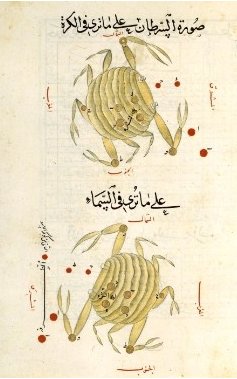 |
|
Aug 2 (214) |
3 |
4 (2 * 108) |
5 |
6 |
7 |
|
HELIACAL STARS: |
|
ε Equulei (317.8) |
No star listed (318) |
21h (319.6)
ARMUS =
η
Capricorni
(319.0),
DORSUM =
θ
Capricorni
(319.3),
TSOO = 24 Capricorni
(319.7) |
DRAMASA =
σ
Oct.,
χ
Capricorni (320.0),
ν
Aquarii (320.3),
γ
Equulei (320.6),
ο
Pavonis (320.8) |
α Oct. (321.5), δ
Equulei (321.7),
φ
Capricorni (321.8) |
KITALPHA (Part of a Horse) =
α
Equulei
(322.0),
ALDERAMIN (The Right Arm) =
α
Cephei
(322.9) |
|
Febr 1 (32) |
2 |
3 (*319) |
4 (400) |
5 |
6 |
|
DEC 2 (4 * 84) |
3 (337) |
4 (*255) |
5 |
6 |
7 |
|
kua hua ko te poporo |
koia kua ea ki te marama |
kua haati
hia e kava |
e kava iri ia ra |
ko te tagata itiiti mau rima ra |
eaha te manu iti pepepepe - mau i
te hokohuki |
|
Iri. 1. To go up; to go in a
boat on the sea (the surface of which gives the
impression of going up from the coast): he-eke te
tagata ki ruga ki te vaka, he-iri ki te Hakakaiga,
the men boarded the boat and went up to
Hakakainga. 2. Ka-iri ki puku toiri ka toiri.
Obscure expression of an ancient curse. Vanaga.
Iri-are, a seaweed. Vanaga.
Pepe. 1. A sketch. 2. Bench, chair,
couch, seat, sofa, saddle; here pepe, mau
pepe, to saddle; noho pepe, a tabouret.
Pepepepe, bedstead. 3. Pau.: butterfly. Ta.:
pepe, id. Mq.: pepe, id. Sa.: pepe,
id. Ma.: pepe, a moth; pepererau, fin,
Mgv.: pererau, wing. Ta.: pereraru,
id. Ma.: parirau, id. Harepepe, kelp.
Here pepe, to saddle. Churchill. Sa.: pepe,
a butterfly, a moth, to flutter about. Nukuoro, Fu.,
Niuē, Uvea, Fotuna,
Nuguria, Ta., Mq.: pepe,
a butterfly. Ma.: pepe,
a grup, a moth; pepepepe,
a butterfly; pepeatua,
a species of butterfly. To.: bebe,
a butterfly. Vi.: mbèbè,
a butterfly. Rotumā: pep,
id. Churchill 2. Mq.: Pepepepe, low,
flat. Ha.: pepepe, id. Churchill. |
And, as we can see,
kava was a
common denominator:
.jpg)
 |
 |
 |
 |
|
Bb9-49 |
Bb9-50 |
Bb10-1 (377) |
Bb10-2 (378 →
Saturn) |
... The ordinary year in the
previous Roman calendar consisted of 12 months,
for a total of 355 days. In addition, a 27-day
intercalary month, the Mensis Intercalaris,
was sometimes inserted between February and
March. This intercalary month was formed by
inserting 22 days after the first 23 or 24 days
of February; the last five days of February,
which counted down toward the start of March,
became the last five days of Intercalaris. The
net effect was to add 22 or 23 days to the year,
forming an intercalary year of 377 or 378 days
...
|
|
RIGHT ASCENSION
DAYS AT THE FULL MOON: |
|
No star listed (140) |
θ
Pyxidis (141.5),
MARKAB VELORUM =
κ
Velorum
(141.5),
AL MINHAR AL ASAD (The Nose of the Lion)
=
κ
Leonis
(141.6),
λ
Pyxidis (141.9) |
Star-25 (Horse)
/
ANA-HEU-HEU-PO-5 (Pillar where
debates were held)
ALPHARD (The Horse) =
α
Hydrae
(142.3),
ω
Leonis (142.6),
τ¹
Hydrae (142.7) |
Al Tarf-7 (The End)
ψ
Velorum (143.3),
ALTERF =
λ
Leonis,
τ²
Hydrae (143.4),
ξ
Leonis (143.5)
*102.0 = *143.4 - *41.4 |
 |
|
Aug 8 (220) |
9 |
10 |
11 |
|
HELIACAL STARS: |
|
DAI =
ι
Capricorni
(323.5),
β
Equulei (323.8) |
γ
Pavonis (324.1),
YAN =
ζ
Capricorni
(324.6) |
Al Sa'd al
Su'ud-22 (Luckiest of the Lucky)
/
Emptiness-11 (Rat)
TSIN = 36 Capricorni
(325.2),
ALPHIRK (The Flock) =
β
Cephei
(325.7),
SADALSUD =
β
Aquarii,
ξ
Gruis (325.9) |
No star listed (326) |
|
... In China,
with Capricornus, Pisces, and a part of Sagittarius,
it [Aquarius] constituted the early Serpent, or
Turtle, Tien Yuen; and later was known as
Hiuen Ying, the Dark Warrior and Hero, or Darkly
Flourishing One, the Hiuen Wu, or Hiuen
Heaou, of the Han dynasty, which Dupuis gave as
Hiven Mao. It was a symbol of the emperor
Tchoun Hin, in whose reign was a great deluge;
but after the Jesuits came in it became Paou Ping,
the Precious Vase. It contained three of the
sieu, and headed the list of zodiac signs as the
Rat, which in the far East was the ideograph for
'water', and still so remains in the almanacs of
Central Asia, Cochin China, and Japan ...
 |
|
Febr 7 (342 + 61) |
8 (404) |
9 |
10 |
|
DEC 8 (342 = 64 +
278) |
9 (*260 = *324 -
*64) |
10 (344, *261 → 9
* 29) |
11 |
|
erua ika |
Ma te
kava ra |
e kava haati ia |
There were 378 (Bb10-2) - 359 (Bb9-33) = 19 days from the
end at β Cancri - where the Head
of Hercules (Ras Algethi) culminated at 21h - to the
end at λ Leonis (Alterf).
.jpg)
|











.jpg)


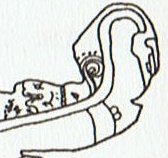

















.jpg)


.jpg)